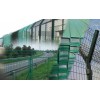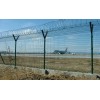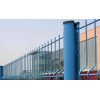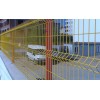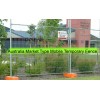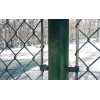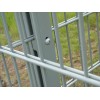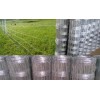Hot Dipped Galvanized After Weld (GAW) is strong and durable. These products are made by dipping previously welded mesh into a bath of molten zinc. The entire fence or mesh, including the welded areas, is thoroughly sealed and protected against rust and corrosion. GAW mesh is made of steel wire without pre galvanizing layer. Can be further coated with chemical powder.
Covered with melt zinc coating layer on the surface, the GAW mesh sheet will last longer time than GBW galvanized before welded wire mesh. The products are available in a wide variety of gauges and mesh sizes. These determine the final use of the product.
Features and Uses
Hot Dipped Galvanised Wire Mesh enjoys the feature of corrosion resistance compared with plain welded wire mesh. Mainly used as fencing panels or further fabricated into wire products (partitions, wire container, wire baskets, etc) and stucco netting products.
Square or rectangular opening. Usually made of plain steel wire by spot welding to form a firm structure and flat surface.
Processing:
Low carbon steel wire arranged in lines and spot welded to flat structure, and then cold-plating (plating), hot dip, PVC plastic coating surface passivation. The mesh panels offer surface smooth, uniform mesh, good performance, stability, anti-corrosion, anti-corrosion resistance.
GBW Welded Wire Mesh
Welded mesh rolls and panels made in the processing of Electro Galvanized Before Weld (GBW) is economical and ideal for industrial and commercial uses. The wires used are galvanized zinc plated before they are welded into a variety of mesh sizes. Different gauge wires are used. The gauge and mesh sizes are determined by the final use of the product. Smaller meshes made with lighter gauge wires are ideal for making cages for small animals, tree guards, corn storing circles, while the mesh rolls with heavier gauges and larger openings are mainly used for security fences.
GBW Welded Mesh has one disadvantage. During the welding process, the galvanizing at the weld spots, where the wires intersect, is burned away. This leaves places in the mesh that have lost the galvanizing protection against rust and corrosion. The weld locations are critical spots that tend to hold moisture longer than the individual wires. This can promote a more rapid decay, as rust eats into the unprotected steel. In interior locations, where the mesh or fence is not exposed to the elements, this is not as much of a problem. Heavier gauge wire will last longer due to the fact that it will take longer for rust to eat through the wire.



